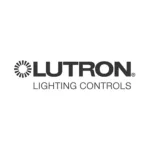Choosing the right lighting for your bathroom isn’t just about aesthetics—it’s a matter of safety and compliance. Bathrooms are one of the most hazardous areas in a home when it comes to electricity due to the presence of water and steam. Incorrectly installed or unsuitable lighting can pose a serious risk of electric shock, short circuits, and even fires.
To prevent accidents, UK regulations classify bathroom spaces into zones, each with specific lighting requirements. These rules ensure that the fixtures installed can withstand moisture exposure while keeping you safe. Additionally, compliance with Part P of the Building Regulations and BS 7671 (IET Wiring Regulations) is mandatory to guarantee proper installation.
In this guide, we’ll break down bathroom lighting zones, explain safety requirements, and highlight the compliance standards you need to know. Whether you’re renovating or installing new lighting, understanding these rules is essential to creating a safe and compliant bathroom.
Bathroom Zones and Safety Requirements
To regulate electrical safety, bathrooms are divided into different zones based on their proximity to water sources. The classification determines the Ingress Protection (IP) rating required for light fittings.
Zone 0
Zone 0 covers the interior of the bath or shower basin, where the highest risk of water exposure exists. Any light fitting installed in this area must be completely waterproof with a rating of at least IP67, ensuring full protection against immersion. For safety, all lights in this zone must also be low voltage (12V maximum).
Zone 1
Zone 1 extends directly above the bath or shower up to a height of 2.25m from the floor. Since this area is frequently exposed to water spray, any lighting must have a minimum IP44 rating, though IP65-rated fittings offer greater protection. Recessed LED downlights are a popular choice for this zone, as they provide a sleek, modern look while meeting safety standards.
Zone 2
Zone 2 includes the area 0.6m beyond Zone 1 and around sinks where water splashes are likely. Light fixtures here require an IP44 rating to guard against moisture. Many homeowners choose wall-mounted vanity lights or mirror lights to provide optimal illumination while maintaining safety.
At Wave Electrical Solutions, we’ve installed IP-rated LED bathroom lights in various homes across Cornwall, ensuring compliance with these safety zones. You can see an example of a professional installation in St Austell here.
Outside Zones
Any area beyond Zone 2 is classified as an outside zone, where there is minimal exposure to water. While no specific IP rating is legally required, choosing fittings rated IP20 or above provides basic protection against dust and condensation. This is where you have the most freedom in selecting decorative ceiling lights or feature lighting.

The Importance of IP Ratings for Bathroom Lighting
Every light fitting has an IP rating, which indicates its protection level against solid objects (first digit) and moisture (second digit). Here’s what common IP ratings mean:
- IP44 – Protected against splashes from all directions (suitable for Zone 2)
- IP65 – Fully resistant to water jets (ideal for Zone 1 and shower areas)
- IP67 – Waterproof and submersible (mandatory for Zone 0)
For more details on IP ratings, refer to the official British Standard BS EN 60529.
Safety Requirements for Bathroom Lighting
Residual Current Devices (RCDs)
By law, all circuits supplying bathroom lighting must be protected by a Residual Current Device (RCD).
- Function: RCDs cut off electricity instantly if a fault is detected, preventing electric shocks.
- Legal requirement: 30mA RCD protection is mandatory for bathroom circuits.
The Institution of Engineering and Technology (IET) outlines these safety regulations in Section 701 of the IET Wiring Regulations.
Choosing the Right Light Fittings
It’s essential to select IP-rated fittings that comply with UK regulations. Non-compliant fixtures increase the risk of short circuits and electrical failures. Whether you need shower-safe downlights or moisture-resistant vanity lights, a professional can help you choose the right option.
If you’re looking for expert guidance on safe and compliant bathroom lighting, our team at Wave Electrical Solutions specialises in domestic lighting installations.
Compliance Standards in the UK
Part P of the Building Regulations
Part P of the Building Regulations applies to all electrical work in bathrooms.
- It requires that any new lighting installation be carried out by a qualified electrician.
- Non-compliance can lead to invalid insurance claims or safety risks.
For full guidance on Part P compliance, visit the official UK Government’s Building Regulations website.
BS 7671 (IET Wiring Regulations)
- The IET Wiring Regulations (BS 7671) set the standard for safe electrical installations in the UK.
- It specifically outlines wiring and safety requirements for bathrooms.
For in-depth details, refer to BS 7671 on the IET website.
Need expert advice on compliance? Contact our team today
Best Practices for Bathroom Lighting Installation
- Always consult a qualified electrician before installing bathroom lights.
- Verify that all light fittings meet IP ratings and RCD protection.
- Regularly inspect and maintain bathroom lights for safety.
FAQs
Can I install any light fixture in my bathroom?
No—fixtures must have the correct IP rating based on the zone they are installed in. Using an unsuitable fitting can lead to electric shock or failure.
Why do I need an RCD in my bathroom?
RCDs prevent fatal electric shocks by cutting off power during a fault. UK law mandates 30mA RCD protection for bathroom circuits.
Should I hire an electrician for bathroom lighting installation?
Yes—Part P regulations require a certified electrician for most bathroom electrical work to ensure compliance and safety.
Conclusion
Bathroom lighting isn’t just about choosing the right design—it’s about ensuring safety and compliance with UK regulations. Understanding IP ratings, bathroom zones, and legal requirements helps prevent electrical hazards.
For peace of mind, always hire a qualified professional to handle installations safely such as Wave Electrical Solutions.










